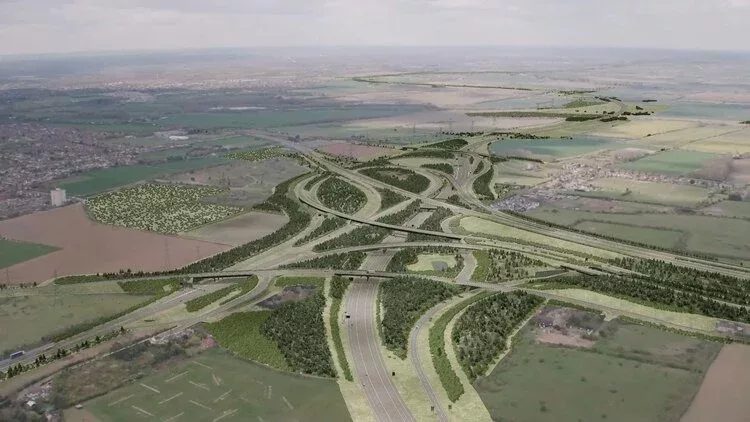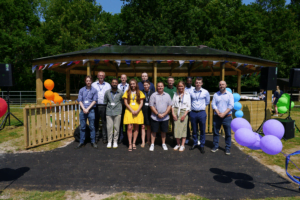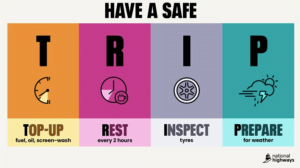The Government has blamed “challenging economic headwinds” including the Russian invasion of Ukraine for a series of “tough decisions” on what transport projects can be achieved within original timeframes.
While the delaying of work on HS2 hit the mainstream headlines, a number of roads projects are being put back too.
The highest profile of these is probably the Lower Thames Crossing which, even if approved, will see construction put back by two years.
“This will allow more time to take into account stakeholder views and prepare an effective and deliverable plan, while helping to meet inflationary pressures and deliver the planning processes properly,” it says.
In a statement, the Department for Transport details the A27 Arundel Bypass and A5036 Port of Liverpool Access in the Roads Investment Strategy (RIS) 2 both facing a range of challenges including environmental considerations and ongoing design changes, and so will be developed in RIS 3 (covering 2025 – 2030) “to allow time to ensure stakeholders’ views are fully considered”.
The schemes earmarked for RIS 3 (2025-30) will continue to be developed and considered for inclusion within RIS 4, which will run from 2030-2035. “Given many of these schemes were previously expected towards the end of RIS 3, this extra time will help ensure better planned and efficient schemes can be deployed more effectively,” it says.
The Government says it is committed to supporting all forms of transport and is investing more than £3bn into active travel up to 2025, “despite the efficiency savings needed due to global financial pressures”.
It adds tthis includes existing funding for active travel schemes such as through the City Region Sustainable Transport Settlements (CRSTS) and National Highways to level up access to active travel across the country. “The department will invest at least £100m across the remainder of the Spending Review period – for 2023/24 and 2024/25. This will be on top of an expected £850m investment up to 2022/23,” the statement reads.
However, the All Party Parliamentary Group for Cycling and Walking has pointed out the announcement means significant cuts for active travel. “£710m was approved for active travel in the 2021 Spending Review,” reads a tweet. “£230m has been spent so far. Today’s announcement of £100m for the remaining two years, means a cut of £380m.”
NEW: Significant cuts announced for walking and cycling
— APPGCW (@allpartycycling) March 9, 2023
£710m was approved for active travel in the 2021 Spending Review.
£230m has been spent so far. Today’s announcement of £100m for the remaining two years, means a cut of £380m. https://t.co/Wf3bO2kkWC
The full DfT press release is below:
Transport Secretary sets out record investment plans for transport network
Record £40bn of capital investment confirmed over next two financial years, despite challenging economic circumstances Prioritising delivery of HS2 from Old Oak Common to Birmingham Curzon Street to ensure passenger benefits as soon as possible Responsible decisions taken on other transport schemes to help balance nation’s books and allow time for planning processes |
| The Transport Secretary has today (Thursday 9 March) ensured record funding is invested in the country’s transport network, sustainably driving growth across the country while managing the pressures of inflation. As part of the Government’s largest capital programme commitment ever, over £40bn will be invested in transformational transport schemes over the next two financial years across the country, helping to level up local communities and deliver on one of the Government’s five priorities to grow the economy.This includes a continued investment in delivering HS2, which will grow local economies, provide a green transport solution and train a skilled construction workforce, as well as almost £8bn in investment over the next two years in major roads – the nation’s economic arteries, which support the bulk of passenger journeys. With over £20 billion spent on Phase One already, the Government will prioritise delivering the opening stage of HS2, with the first high-speed rail services running between new stations at Old Oak Common in west London and Curzon Street in Birmingham by the early 2030s. This will be transformative for passengers and communities, ensuring that the earliest benefits of HS2 are retained – creating jobs, attracting investment and sparking housing and commercial regeneration along and beyond the route.The Government also remains fully committed to delivering HS2 from Euston to Manchester. However, in recognition of inflationary pressures and to help balance the nation’s books, the next two years will be used to rephase construction and optimise future delivery of Phase 2a between Birmingham and Crewe so this is done in the most cost-effective way. This aims to deliver high-speed services to Crewe and the North West as soon as possible after accounting for the rephasing of construction.At the same time, the Government will take the time to ensure an affordable and deliverable design at Euston, with a view to delivering the station alongside high-speed infrastructure to Manchester, while the High Speed Rail (Crewe-Manchester) Bill continues through Parliament. Work continues on progressing commitments made in the Integrated Rail Plan to develop HS2 East, the proposed route for HS2 services between the West and East Midlands, and to consider the most effective way to take HS2 trains to Leeds.Transport Secretary Mark Harper said: “We know the power of transport as an engine for sustainable economic growth. That’s why – even in this tough economic climate – this Government sees transport investment as a down payment on the country’s future and is committing £20bn over each of the next two years to improve the UK’s transport network. “But we can’t ignore the current realities. Putin’s war in Ukraine has hiked up inflation, sending supply chain costs rocketing. The responsible decisions I’ve outlined today will ensure we balance the budget at the same time as investing record sums in our transport network to help halve inflation, grow the economy and reduce debt.” Despite the Government’s record £40bn investment, there are challenging economic headwinds following Russia’s illegal invasion of Ukraine and supply chain disruption as the global economy recovers from the pandemic, which have made project delivery difficult. This means the Government has had to take tough decisions on what can be achieved within original timeframes.The A27 Arundel Bypass and A5036 Port of Liverpool Access in the Roads Investment Strategy (RIS) 2 both face a range of challenges including environmental considerations and ongoing design changes, and so will be developed in RIS 3 (covering 2025 – 2030) to allow time to ensure stakeholders’ views are fully considered. The schemes earmarked for RIS 3 (2025-30) will continue to be developed and considered for inclusion within RIS 4, which will run from 2030-2035. Given many of these schemes were previously expected towards the end of RIS 3, this extra time will help ensure better planned and efficient schemes can be deployed more effectively. As one of the largest planning applications ever, the Lower Thames Crossing, backed by £800m to date, will also be slowed down by two years. This will allow more time to take into account stakeholder views and prepare an effective and deliverable plan, while helping to meet inflationary pressures and deliver the planning processes properly. The Government is committed to supporting all forms of transport and is investing more than £3bn into active travel up to 2025, despite the efficiency savings needed due to global financial pressures. This includes existing funding for active travel schemes such as through the City Region Sustainable Transport Settlements (CRSTS) and National Highways to level up access to active travel across the country. The department will invest at least £100m across the remainder of the Spending Review period – for 2023/24 and 2024/25. This will be on top of an expected £850m investment up to 2022/23. |
(Picture of Lower Thames Crossing – National Highways)





















